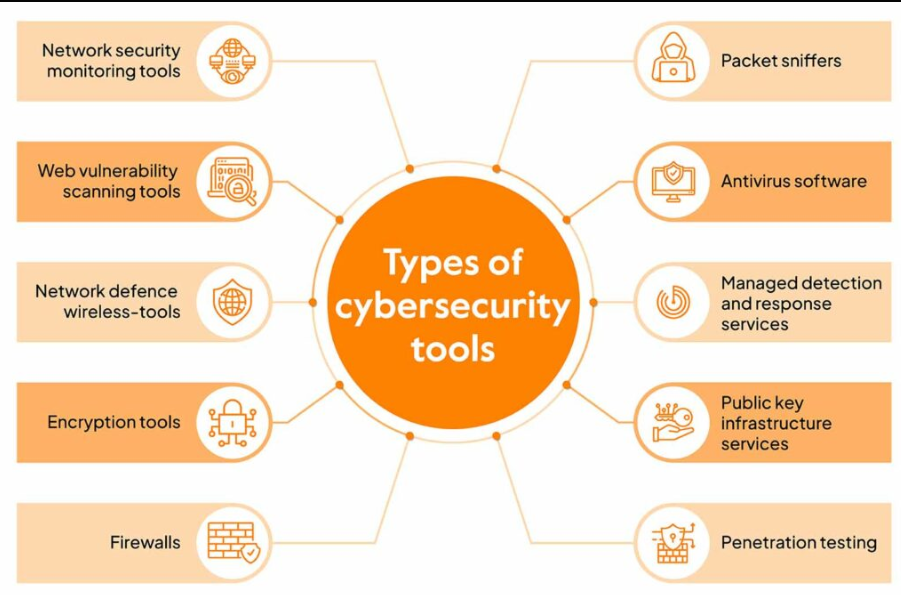Let’s be honest—if you’re running a startup, you’re probably wearing more hats than you can count. One minute you're pitching to investors, the next you're fixing a bug, managing your team, and updating your landing page. It’s easy for cybersecurity to fall to the bottom of your to-do list, especially when you feel like you’re still getting your product off the ground. Cyber Security Classes in Pune
Most startups think they’re too small to be targeted by hackers. After all, why would anyone bother attacking a company that’s just getting started? But that mindset is exactly what makes startups easy targets. Hackers know that many young companies don’t have the time, budget, or expertise to lock down their systems—and that makes them the perfect entry point.
So, if you're a founder or part of a startup team and you're wondering how to get started with cybersecurity (without going broke or crazy), this guide is for you.
Why Startups Can’t Afford to Ignore Cybersecurity
Think about it—your startup may still be growing, but you’re already handling sensitive stuff: customer emails, login credentials, maybe even payment data. If that information gets leaked or stolen, the damage could be irreversible.
One successful cyberattack could lead to:
Lost customer trust
Legal troubles
Downtime that stalls your progress
A hit to your reputation you may not recover from
For a startup, where every dollar and every day matters, this isn’t just inconvenient—it can be fatal.
So Where Do You Start?
The good news is, you don’t need to be a security expert or hire a full-blown IT department to get started. Here’s how to begin with a few smart, manageable steps:
1. Start With a Risk Check
You can’t protect what you don’t understand. Take a day (or even a few hours) to do a basic risk assessment:
What kind of data are you collecting?
Where is it stored?
Who has access to it?
What happens if that data is lost or stolen?
Even just writing this down in a shared doc can help clarify where you're most exposed—and what needs your attention first.
2. Cover the Basics (They're More Powerful Than You Think)
Before you spend money on tools, make sure you’ve nailed the basics.
Strong Passwords + Password Manager:
Encourage your team to use complex, unique passwords. Tools like LastPass or Bitwarden make this super easy and secure.
Enable Two-Factor Authentication (2FA):
Whether it’s your email, Slack, GitHub, or CRM, turn on 2FA wherever possible. It's one of the quickest ways to add a serious layer of protection.
Keep Everything Updated:
Seriously—don't click "remind me later" when updates pop up. Most software patches fix known security holes that hackers love to exploit.
Backups Matter:
Set up automatic backups of your core systems and data. If ransomware hits you tomorrow, having a recent backup could be what saves your company. Cyber Security Training in Pune
3. Train Your Team (Even If It’s Just 5 People)
It’s easy to assume that hackers use fancy tools and coding magic to break in—but a lot of the time, they just trick someone into clicking a bad link. That’s why your people are your first line of defense.
Hold a short session to talk about:
How to spot phishing emails
Why it’s risky to use the same password everywhere
What to do if something feels off
You don’t need a security specialist for this—there are tons of free resources and videos online to help get the message across.
4. Build Security Into Your Product
If you’re building a product—especially one that collects user data—security needs to be part of the design, not an afterthought. Some simple ways to start:
Use HTTPS
Sanitize and validate all user inputs
Store passwords with encryption (not plain text!)
Limit permissions—only give access to what’s necessary
Consider scheduling a security review every few sprints. It doesn’t have to be extensive, just a checkpoint to make sure you’re not overlooking something important.
5. Have a Plan for “What If?”
Let’s say the worst happens—you’re hacked, your site goes down, or sensitive data leaks. What do you do?
Having a basic incident response plan can be a lifesaver. It should cover:
Who takes the lead
Who to contact (team, customers, legal)
What tools or backups to use
How to document the situation
Even a one-page plan is better than scrambling in panic mode.
6. Think About Compliance Early
Depending on where you operate and what kind of data you handle, you might need to follow rules like GDPR, HIPAA, or PCI-DSS. Don’t wait until a legal issue pops up—start learning about these early and get guidance if needed. It’s easier (and cheaper) to build with compliance in mind than to fix things later.
Final Thoughts: It’s Not About Being Perfect
Let’s be real—you’re not going to solve all your cybersecurity issues in a week. And that’s okay. What matters is that you start now, take it seriously, and build a culture of security into your startup from the beginning.
Cybersecurity isn’t just about avoiding risk—it’s about building trust. When customers know their data is safe with you, they’re more likely to stick around. And as your startup grows, having a strong security foundation will help you scale with confidence.
Start simple. Stay aware. Grow smart.






Write a comment ...